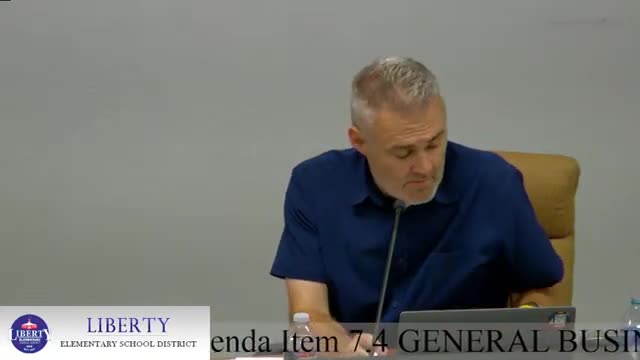School district faces crisis with alarming proficiency rates
July 31, 2024 | Liberty Elementary District (4266), School Districts, Arizona

This article was created by AI summarizing key points discussed. AI makes mistakes, so for full details and context, please refer to the video of the full meeting. Please report any errors so we can fix them. Report an error »

During a recent government meeting, board members expressed urgent concerns regarding the alarming proficiency rates among students in the district. One member emphasized the need for clear definitions of \"substantial increase\" in educational outcomes, highlighting the necessity for measurable deliverables to assess growth effectively.
The discussion revealed a troubling picture: proficiency rates as low as 3% and 6% in certain grades, with an overall 17% proficiency rate for sixth graders. This has raised significant questions about the effectiveness of current educational strategies and leadership within the district. The board member articulated frustration over the lack of progress despite previous advice from various committees, stating, \"nothing is being decided in this,\" but underscoring the need for accountability and improvement.
The member further challenged educators to demonstrate the effectiveness of their programs, urging them to show tangible results to their students rather than merely reporting to the board. The sentiment was clear: without visible improvement, it would be difficult to justify seeking additional funding from taxpayers, whether through bonds or overrides.
The meeting underscored a collective call for change, stressing that the responsibility for improvement lies not only with teachers but also with the administration and the district as a whole. The board member's remarks served as a wake-up call, demanding a reevaluation of strategies and a commitment to enhancing educational outcomes for all students.
The discussion revealed a troubling picture: proficiency rates as low as 3% and 6% in certain grades, with an overall 17% proficiency rate for sixth graders. This has raised significant questions about the effectiveness of current educational strategies and leadership within the district. The board member articulated frustration over the lack of progress despite previous advice from various committees, stating, \"nothing is being decided in this,\" but underscoring the need for accountability and improvement.
The member further challenged educators to demonstrate the effectiveness of their programs, urging them to show tangible results to their students rather than merely reporting to the board. The sentiment was clear: without visible improvement, it would be difficult to justify seeking additional funding from taxpayers, whether through bonds or overrides.
The meeting underscored a collective call for change, stressing that the responsibility for improvement lies not only with teachers but also with the administration and the district as a whole. The board member's remarks served as a wake-up call, demanding a reevaluation of strategies and a commitment to enhancing educational outcomes for all students.
View full meeting
This article is based on a recent meeting—watch the full video and explore the complete transcript for deeper insights into the discussion.
View full meeting
